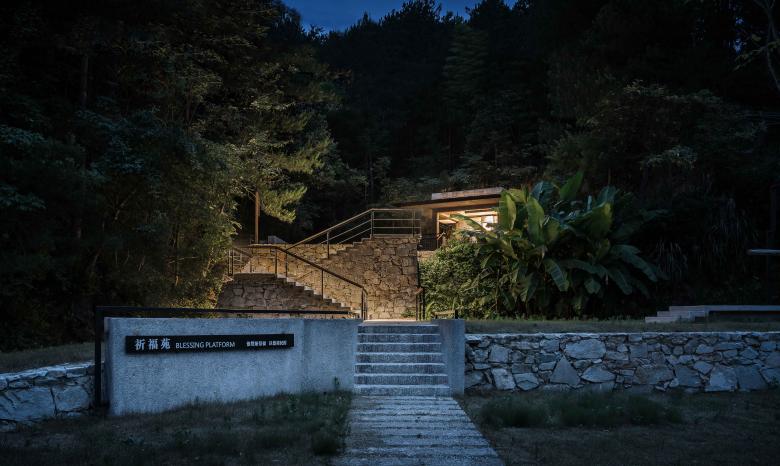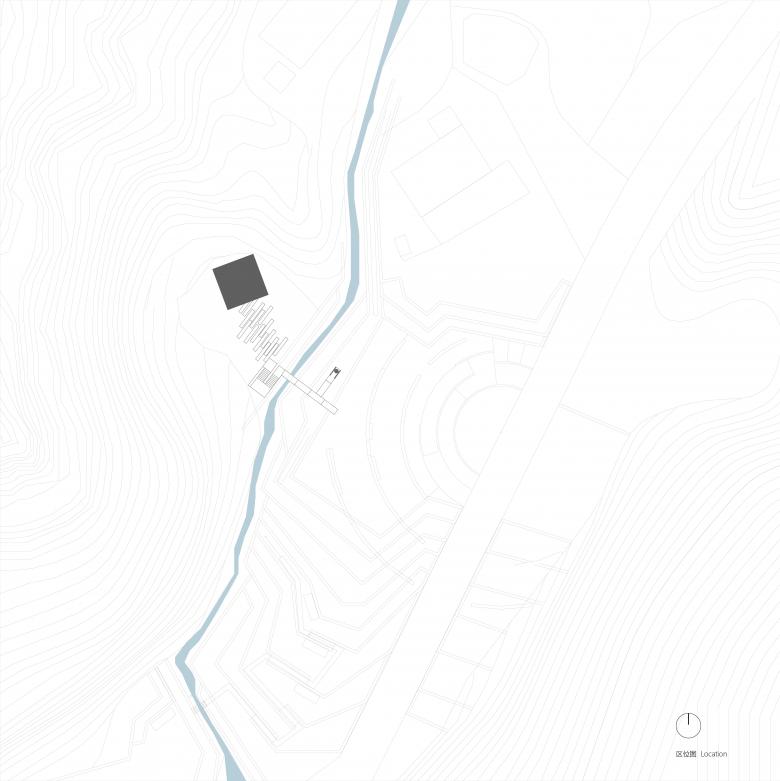New Home for the God of Wealth
Eduard Kögel
19. September 2018
The province of Anhui lies on the border between temperate and subtropical climates in east China. The township of Sun is located in the heart of the scenic Dabie Mountains, in Huashan County in the southwest of the province.
Project Location: Sun Village, Huoshan County, Lu’an City, Anhui Province
Design Time Period: from March 2017
Completion Date: February 2018
Area: 20 square metres
Chief Designer: Fu Yingbin
Team: Zhang Haoran, Cai Wancheng, Yan Lu
Photographer: Zhang Qianxi
Architect Fu Yingbin was commissioned by the local government to design a public square and a parking lot, in order to boost tourism in the region. A small temple to the god of wealth, located at the bottom of a small hill fell victim to the construction work. This temple had been the spiritual centre for the villagers for a long time. When it became clear that the 200–year old temple had been rebuilt several times already, the architects proposed to rebuild it once again, a few meters further up the slope. The new temple was not only to serve as a holy place of popular faith, but also become an attractive place for tourists and visitors.
Since such temples usually have a very closed character and are small in area, the architects considered a strategy for an open pavilion that would not only provide space for contemplation, but also space for visitors. A solid back wall was erected behind the image of the god of wealth, while the sides towards the village and the square were left open, creating a completely open room covered by a flat roof.
When constructing buildings in rural areas, one has to factor into consideration limitations on available material and possible construction techniques, as it is local conditions that govern what is possible. In this instance, bamboo mats were woven with the help of local craftsmen to provide a decorative formwork for the concrete structural frame cast-in-situ. Hollow bricks were used for the solid wall, the opening creating a texture that blurs the boundaries of the space. The square-shaped opening in the roof lets in light and contributes to the religious atmosphere.
In southern China, water is a symbol of wealth. Inspired by the ‘rain chains’ in Japanese traditional architecture, the design concept for the temple turned rainwater drainage into a living element and a metaphor for the god of wealth. Locals not only burn incense, pine branches and paper money, they also light fireworks in the temple. Because of the risks of fire and pollution, the architects sought a design solution that would prevent these dangers. Instead of these practices, they proposed a new solution, which was accepted. The holes in the brick wall serve to store the wishes written on paper in the temple and to create an archive over time.
The ringing of bells is important in China’s religions. A large bell was especially designed and installed at the entrance to the temple, and is struck after visiting the temple to receive blessings. Upon completion of this spontaneous project not part of the original commission, the villagers recognized the new temple as a spiritual centre and it became a public place for visitors and locals alike.
The small temple at the edge of the village not only renewed old popular beliefs, but also showed the inhabitants that they do not have to leave their old cultural habits behind. The radical reduction of the traditional temple space to an open pavilion with few materials and clever design decisions illustrates how powerful such a small intervention can be. It becomes clear that architecture can achieve something that lies beyond pure functionality and perhaps even redefines the genius loci that gives this village life a future.
Verwandte Artikel
-
Spotlight on Italy
16.05.18
-
Bologna Shoah Memorial
20.07.15












